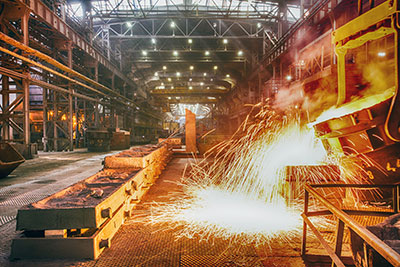High-frequency (radio-frequency) welding in the production of stainless electrowelded pipes

High-frequency (radio frequency) wave welding with frequency (10-450 kHz) is the most common method of producing stainless electric-welded pipes of small and medium diameters. The high speed of electric welding gives a productivity of up to 2.5 m / s without reducing the quality of the weld. This method produces pipes from the most common steel grades, including alloyed and highly alloyed metals.
The method has been developed since 1956. Prior to this, stainless electrically welded pipes were made mainly by resistance welding.
The method is based on the fact that high-frequency current goes along the path not along the path of minimum resistance, but by minimal induction. In this case, the predominantly metal surface is heated. A very thin layer on the edges of the workpiece is heated.
High-frequency current is applied to the surface of the edge of the workpiece: by contact or induction. With the contact method - the value of the inductive resistance of the chain increases with the diameter of the tube billet, thereby reducing the power consumption. However, significant wear of sliding contacts limits the application of this method. With the induction method - the larger the diameter of the pipe billet, the greater the energy consumption. Therefore, induction welding only pipes up to 114 mm in diameter are welded.


